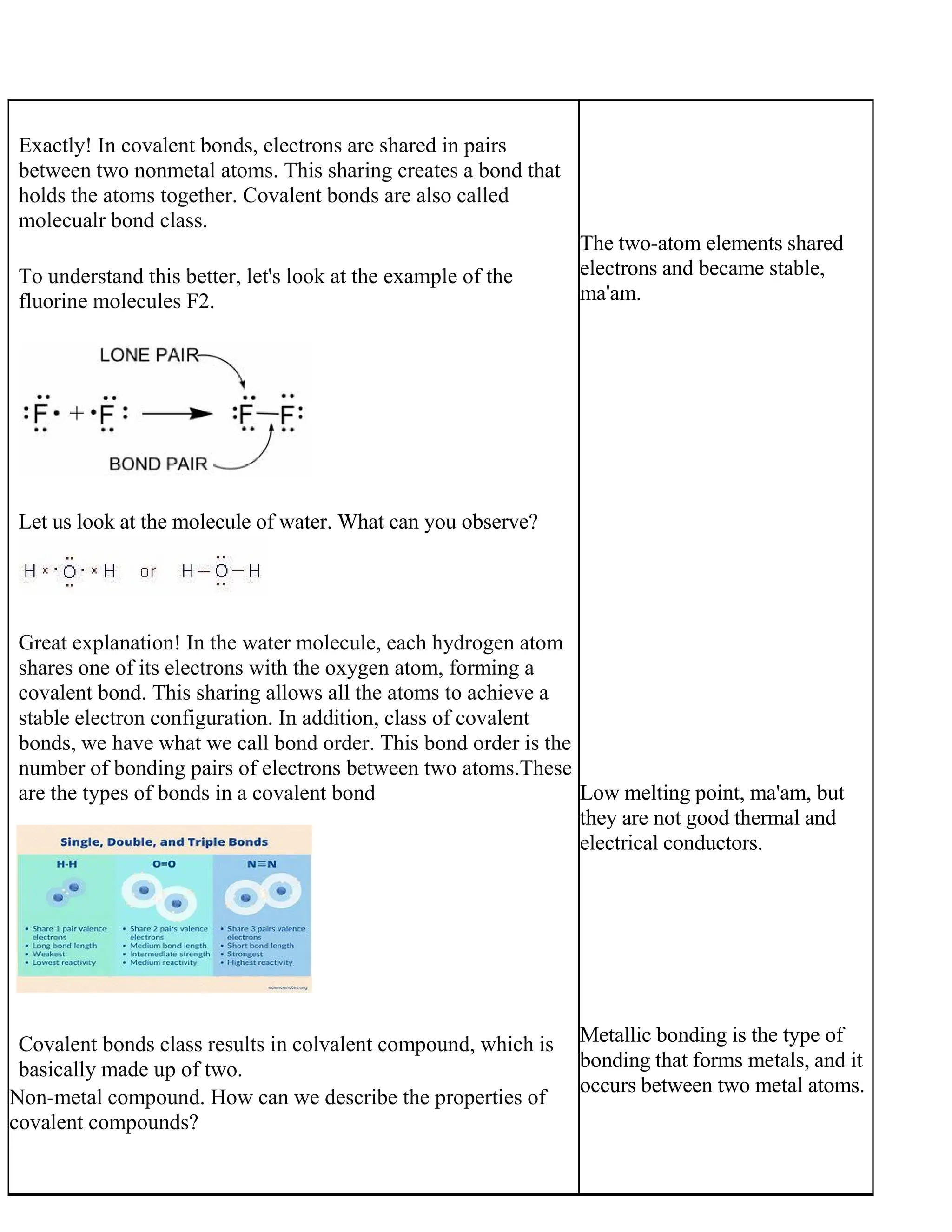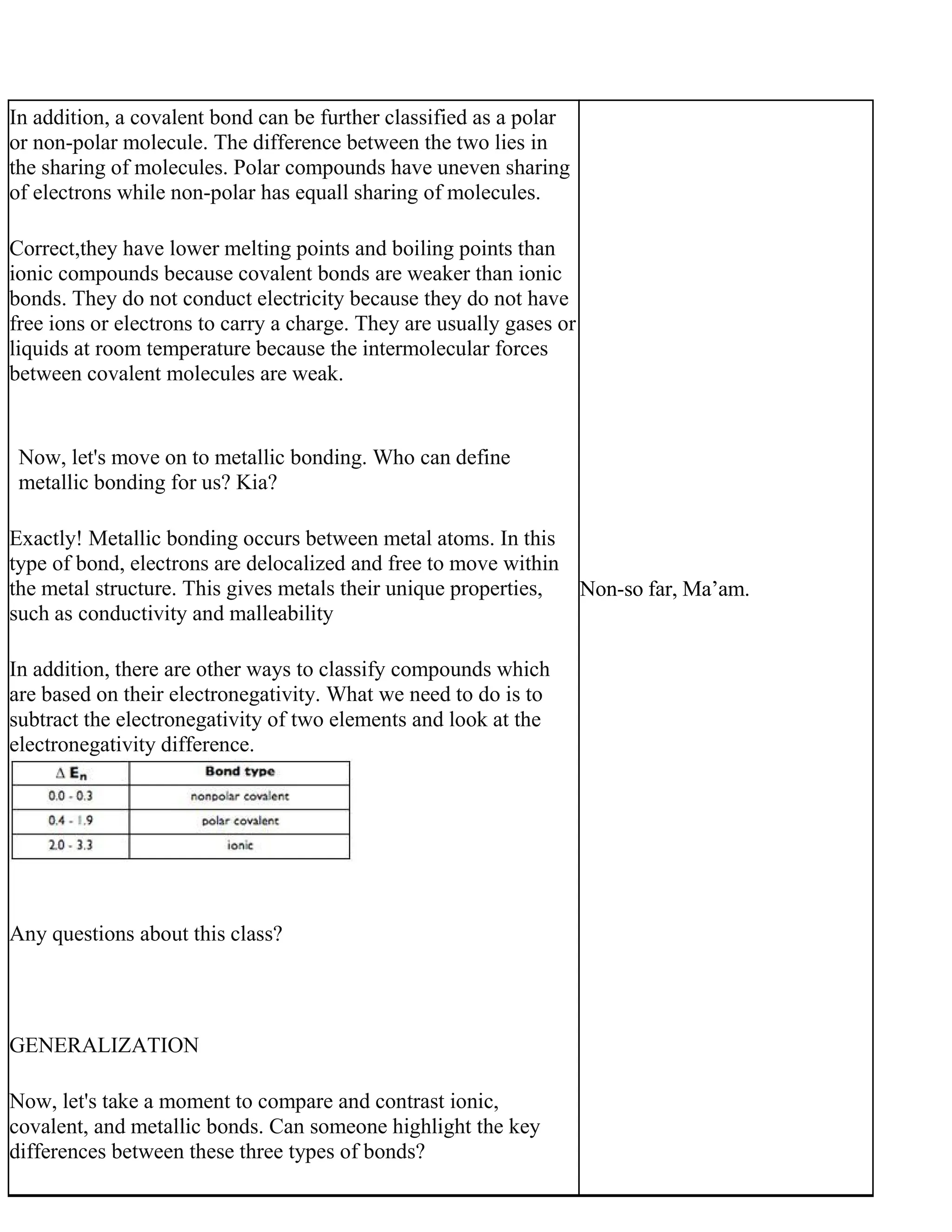The document is a detailed lesson plan for teaching types of chemical bonding in Science 9. It includes objectives, topics, and a planned teaching procedure. The lesson plan aims to teach students to recognize different types of compounds based on their properties, and explain the importance of knowing compound types. The lesson will discuss ionic, covalent, and metallic bonding, explaining their characteristics and how they determine compound properties like melting point and conductivity. Examples like NaCl and H2O will be used to illustrate ionic and covalent bonding.
![THE COLLEGE OF MAASIN
“Nisi Dominus Frustra”
Maasin City,
Southern Leyte
Liberal Arts & Education Department
A Detailed Lesson Plan in Science 9
Prepared by: Fatima S. Sumabat
I. LEARNING COMPETENCY: Re co gn iz e dif fer en t ty p es of comp o un ds (io nic or co va len t) bas ed on
th ei r pro pe rti es su ch as me ltin g poi nt, ha rdn es s, po lar ity , and ele ctr ica l an d the rma l
con du ct ivi ty.
II. OBJECTIVES:
At the end of the lesson, all the students should be able to:
a. state the difference between ionic, covalent, and metallic bonds.
b.classify compounds as either ionic, covalent, or metallic properties through ttheir properties ; and
c.explain the importance of knowing the types of compounds and their properties in real life.
III. SUBJECT MATTER
Topic:Types of Chemical bonding
PowerPoint Presentation,
Pictures
Videos
References: A.Eval,A.,&Bondad,L.(2021).ScienceforInnovativeMindsGrade9(pp.126–129)[ReviewofScienceforInnovative
MindsGrade9].
TEACHER’S
ACTIVITY
STUDENT’S ACTIVITY](https://image.slidesharecdn.com/revised-lp-sumabat21-231122210805-bc30e00e/75/Revised-LP-Sumabat-2-1-pdf-1-2048.jpg)










